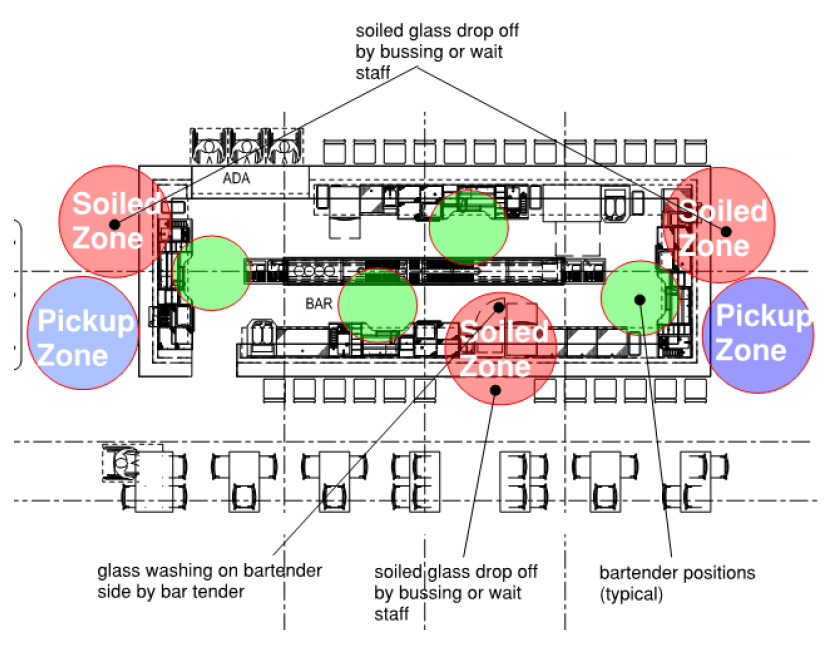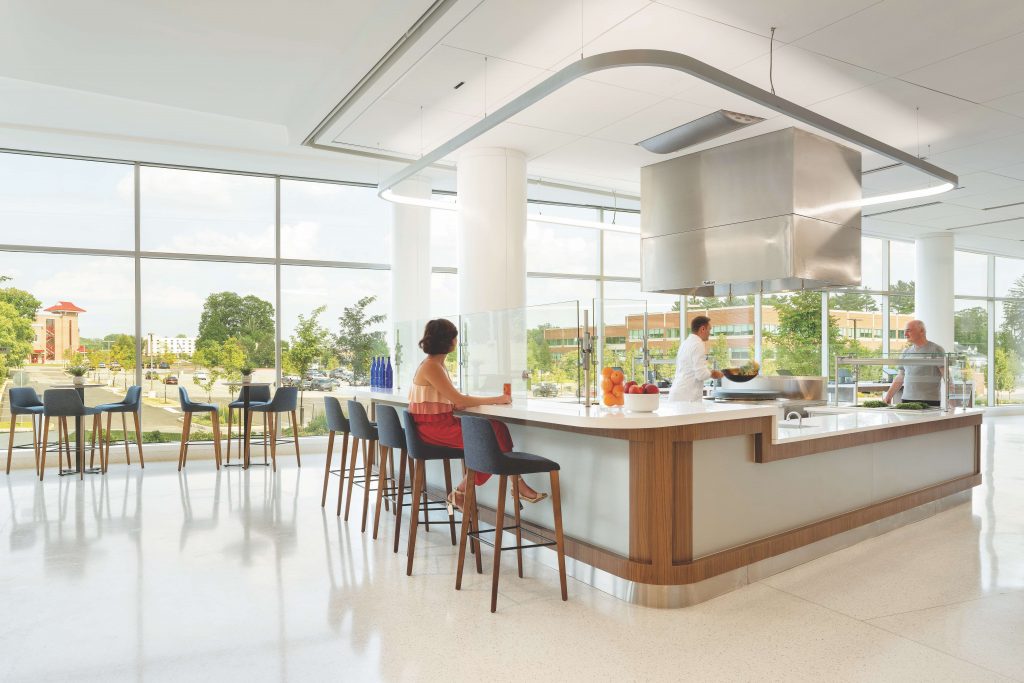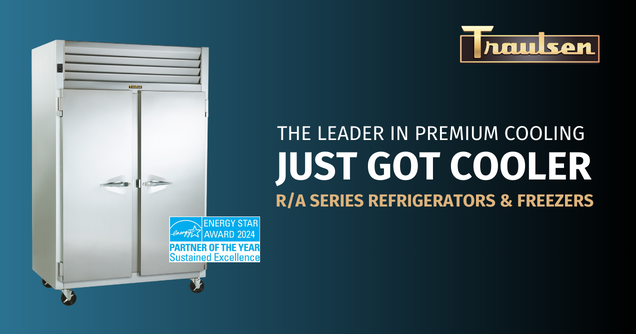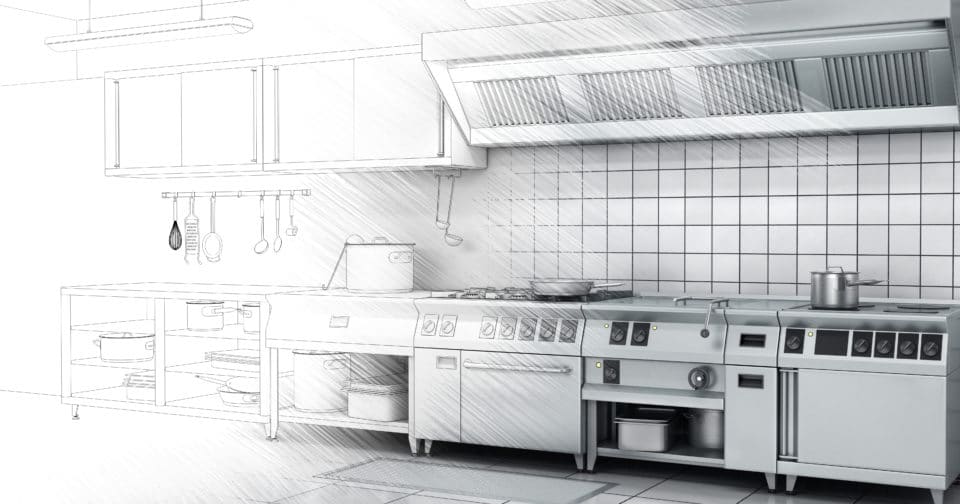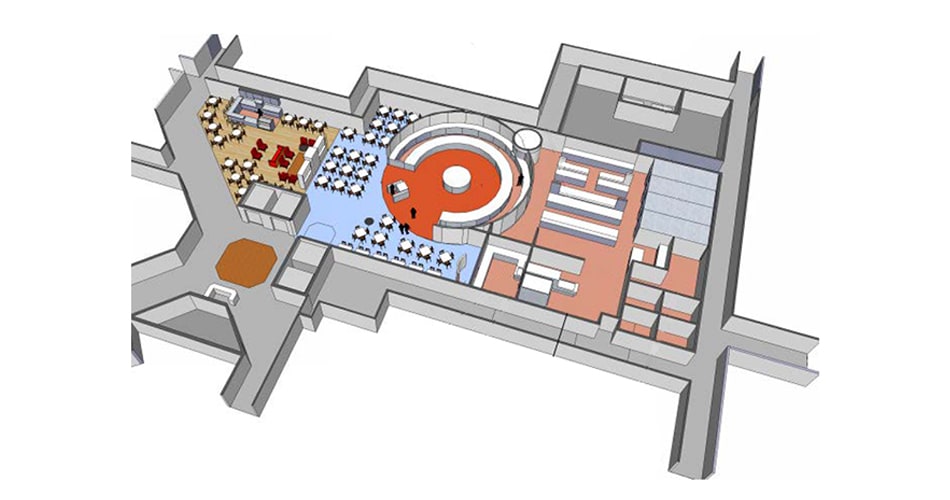
“I’m going to break one of the rules of the trade here. I’m going to tell you some of the secrets of improvisation. Just remember – it’s always a good idea to follow the directions exactly the first time you try a recipe. But from then on, you’re on your own,” said James Beard.
In reality, there has never been a time in our history where we in the food and beverage industry have been so tasked to ‘figure it out’. In the wake of Covid-19, the industry already looks different: restaurants and bars have been closed, or reverted to take-out, all over the world. Stadiums, arenas, and theaters have been dark. Convention centers shut tight. The ability of people to commune has been sniffed out by Coronavirus.
But, people are resilient and social, and not only do the businesses in the industry want to return to work and serve customers, but the customers want to get back to enjoying the industry amenities and offerings.
The systems discussed herein are a change in business practice, but are necessary to begin to consider and budget for, as undoubtedly, such systems will ultimately be mandated by regulation to protect public health. In addition to the investment and commitment by the industry, the consumer must adapt to our new normal by using technology. This creates its own challenges, but with repetition and global acceptance over time, will be the new way of operation for foodservice venues.
Spreading coronavirus via food
The food and beverage business during and post Covid-19 is important, and must be strategically handled. Unlike foodborne gastrointestinal viruses like norovirus and hepatitis A that often make people ill through contaminated food, SARS-CoV-2, which causes Covid-19, is a virus that causes respiratory, not gastrointestinal, illness. Foodborne exposure to this virus is, at the time of this article, not known to be a route of transmission.
With respect to foodborne pathogens, the CDC, FDA, and FSIS continue to work with state and local partners to investigate foodborne illness and outbreaks. The FDA’s Coordinated Outbreak Response and Evaluation (CORE) Network manages outbreak response, as well as surveillance and post-response activities related to incidents involving multiple illnesses linked to FDA-regulated human food products, including dietary supplements, and cosmetic products.
During this coronavirus outbreak, CORE’s full-time staff continues to operate to prepare for, coordinate and carry out response activities to incidents of foodborne illness.
Spreading coronavirus via people
The application of management to both employees and guests is the most important tool to safeguard all food and beverage operations. This includes managing employee health, personal hygiene, managing operations, and managing pick-up and delivery.
Managing employee health
All employees should report all symptoms consistent with Covid-19 to their supervisors. Employees should stay home and consult with their healthcare provider if they have such symptoms. If sick at work, employees should be sent home immediately. The workspace must be completely cleaned and disinfected, and others within 6ft of the employee should be considered exposed and informed of such exposure. Those exposed people should notify their supervisors and start pre-screening (pre-work temperature checks, self-monitoring, more frequent cleaning, wear masks and gloves, and stay at least 6 feet from others when possible).
Personal hygiene
Effective hand hygiene includes washing hands with soap for at least 20 seconds, especially after using the bathroom, before eating, after blowing your nose, coughing, or sneezing. An effective tool is to trigger automatic handwashing requirements on a rotating basis per shift, so that at any given time, all employees are rotating through a handwashing program. It is also recommended that if working with unwrapped or exposed foods, hands are gloved, and that the gloves are frequently replaced.
Managing operations
Washing, rinsing, and sanitizing food contact services such as dishware, utensils, food preparation services, and beverage equipment after use is necessary to protect both employees and customers from the spread of Covid-19. Additionally, door knobs, equipment handles, and front of house countertops and guest accessible elements, such as, tables and chairs must also be frequently disinfected using EPA-registered disinfectants.
It is also necessary to help customers maintain good infection control and social distancing by modifying or even discontinuing open bulk food self-service salad bars, buffets, and beverage service stations requiring customer use of common utensils or dispensers. Implementation of prepackaged foods and ‘touch-free’ dispensing and service equipment is encouraged. For ‘frictionless’ quick service and grab-and-go products, encourage space between customers while they are in line.
Managing pick-up, delivery, and waiting lines
Text alerts or calls are more effective than other notification modalities, more personal, and safer as customers are not sharing transponders. Social distancing must be assisted, with space provided at the facility for people to safely congregate while ordering, waiting, and picking-up. All coolers should be routinely cleaned and sanitized, and insulated delivery and holding bags also cannot be overlooked.
Spreading coronavirus via air
A highly publicized study based on a restaurant in Guangzhou, China, concluded that one diner with Covid-19 but asymptomatic at the time of his patronage at the restaurant, spread the virus to nine other people in the restaurant by way of the air-conditioners blowing the virus around. The other 73 diners and eight employees on the floor did not get sick.
The study is anticipated to be published by the Centers for Disease Control and Prevention in the July issue of Emerging Infectious Diseases. One glaring problem with the study is that the researchers did not attempt to simulate airborne transmission, rending a causation analysis based on speculation rather than reproducible evidence.
What this does help us understand, however, is that food and beverage facilities have challenges ahead.
Here are the facts of the study:
- On January 24, 2020, a family went to lunch at a restaurant in Guangzhou, China.
- At lunch, five family members appeared healthy. They are at table A in the diagram, below.

- Later in the day, one family member (a 63-year-old woman), had a fever and cough, went to the hospital, and tested positive for coronavirus.
- Within two weeks, nine others who ate lunch on that floor of the restaurant tested positive. Four were relatives of the 63-year-old woman and could have been infected outside of the restaurant.
- The other five appear to have been infected at the restaurant by the 63-year-old woman. They are at tables B and C in the diagram.
- Tables A and B dined at the same time, at tables next to one another, for 53 minutes, and three became sick.
- Tables A and C dined at the same time, at tables next to one another, for 73 minutes, and two became sick.
- The air conditioning unit was next to table C, and blew air southward across tables A, B, and C.
- Researches were unable to identify any other exposures to the virus by those who became sick after dining at the restaurant.
The diagram above shows the arrangement of a restaurant’s tables and air conditioning airflow at site of an outbreak of coronavirus in Guangzhou, China. Red circles indicate the seating of future case-patients; the yellow-filled red circle indicates the index case, or first-documented, patient. Credit: Centers for Disease Control and Prevention
Social distancing
It was concluded that this specific outbreak was caused by droplet transmission prompted by air-conditioning ventilation. The basis for this finding was that the spread of the virus appeared to be clearly tracked by the direction of the airflow.
Accordingly, it has been recommended that the direction of airflow when arranging tables, and germicidal ultraviolet lights to destroy floating virus particles, are important tools for foodservice establishments to deploy in fighting Covid-19.
Certainly, social distancing is necessary, however, it is impractical to expect that every person in every foodservice establishment will voluntarily maintain a distance from others of at least 6ft. We do not sit that far apart from one another at the table, we walk past one another while moving through dining space, and we cannot wear masks when eating.
Yes, restaurants can and should place tables 6ft apart, but must do so thoughtfully and strategically or they will lose revenue generating seating. The idea, however, that ventilation systems programed with controlled patterns of airflow to keep the virus aloft is just as important, if not more, and is also a tool to evade illness.
Risk mitigation
As with any business, limiting exposure to risk is essential to control the bottom line. Protecting the health and safety of employees and customers is good business, as it also helps protect from litigation.
However, such risk mitigation should keep the guest experience high utilizing invisible tools involving innovative technology, design, and management.
Adaptation by design and management
The healthcare industry has long established the golden standard for ‘contamination control’ kitchen design as it pertains to risk management. All medical-type facility kitchens are designed differently than traditional hospitality kitchen designs to mitigate cross-contamination. Pulling decades of experience from healthcare facilities kitchen design and implementing the approach in the design of public venues is a current necessity.
Such design must be robust, and the flow of food and staff must be strategic and seamless, entailing correct positive and negative air ventilation in kitchen and dining spaces, touch free technology for sink faucets, doors, coolers, and other implements.
Prior to Covid-19, a simple kitchen space would look like this example:
Post the arrival of Covid-19, a kitchen space that provides for risk mitigation should look like this:
Additionally, receiving, dishwashing and laundry should be designed with clear physical separation between soiled and clean items. Laundry and dishwashing systems should have pass through washers, so that the risk of soiled items contaminating clean items is removed by virtue of design.
Bars present a unique issue because, in the past, the bartender made drinks, ran food, bussed dishes, and dish washed under the counter. Those tasks must now change. The bar should be separated: the bartender stays on the clean side, and back bar attendants and dishwashers stay in the soiled zone. Keeping a customer experience so that the patron does not notice such designation of space and duty is the function of good design and management.
Prior to Covid-19, a simple bar space would look like this:
Post the arrival of Covid-19, potential soiled and clean separation at bars will look like this:
Convention centers, arenas, airports, theaters, and other large public gathering spaces will find it more important than ever to be on the innovative side of technology. More automation and frictionless and touchless service decreases the risk of exposure to threats like Covid-19, and decreases labor cost and risk of illness to employees.
The key is to mitigate touch points at both the point of sale and guest food handling. Modern and innovative facilities are finalizing the design of space where all ordering is through mobile phone applications or voice activated mobile ordering kiosks. Orders are placed and paid by phone or by at the kiosk. Once the order is ready and placed in an independent order fulfillment space, a notification is sent to the mobile phone as well as placed on a digital display/menu board. The consumer at that point may pick up the order, without having to wait in line, congregate in a crowd, or interact in close proximity with others.
Not only does a design and implementation like this respect social distancing, it is innovate and creates a customer experience far superior than waiting in a roped off line while missing part of the event.
At least in the immediate future, the days of buffets are in the past. Salad bars are likely to provide pre-plated/covered and pre-packaged salad choices and buffets are being replaced by the hot and cold pre-plated/covered and prepackaged food component.
Rather than allow for this to cause a decrease in quality of the food product, there are innovations arising in food preparation, packaging and presentation by talented chefs. Here, utilizing quality ingredients and food presentation must help the consumer overcome prior negative experiences with pre-packaged and pre-plated foods.
Reopening and ongoing service
The food and beverage industry will look different in the next couple of years. The implementation of technology and design will be one of the most obvious changes, and while the idea is that design and technology decreases risk of spread of illness, the hope is that it will create a far superior customer experience and improve the bottom line of industry business.
These tools, however, must be thoughtfully specified and utilized in partnership with one another. As you can imagine, a touchless sink faucet’s purpose is defeated if an open, non-controlled ventilation system is blowing on the person using the sink. The approach to space is complex and requires complex and thoughtful solutions.
Stephen K. Young FCSI and Michael E. Caruso are managing members/executive principals of William Caruso & Partners
About the authors:
Stephen K. Young has been with William Caruso & Partners the company for 28 years, leading and spearheading the firm’s design team. His creative and artistic approach to design has set him and the company apart from others. Young leads the company’s creative and innovative design focus and project management. He can be reached at syoung@wcandpartners.com or directly by phone at (720) 987-4199.
Michael E. Caruso has been with the William Caruso & Partners for over two years, coming from a career in corporate finance. He started his role as the corporate controller, which quickly evolved to sharing his business acumen with customers through the company’s management advisement services (MAS) group. Caruso leads the company’s MAS portfolio and together, he and Young manage the practice. He can be reached at mcaruso@wcandpartners.com or directly by phone at (720) 765-2155.
Steve Young and Michael Caruso have a modern vision, creating system efficiencies that fully take advantage of technology and talent as applied to foodservice design and planning, focusing on a diverse and inclusive work environment.




